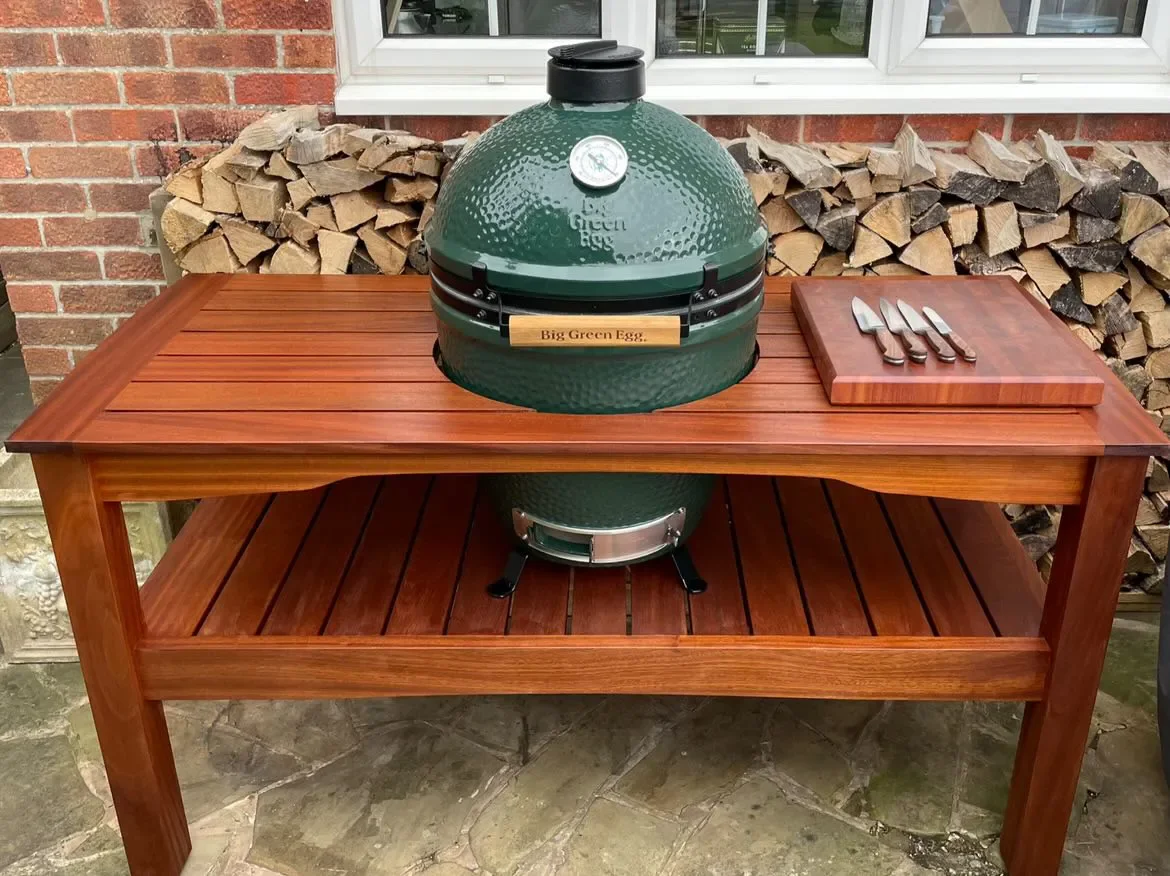9 Things You Need to Know About Beech Wood
Did you know a beech tree's flowers, nuts and leaves are edible?
As of 2016, the most famous beech trees in the world - or certainly the most photographed - are the ones lining Dark Hedges in Ballymoney, Ireland. The reason? The avenue was used as the setting for the Kingsroad in HBO's Game of Thrones, a TV show watched by nearly 17.4 million people worldwide.
Widely used but comparatively little known, wood from the common beech tree holds many, many properties and possible uses. To see it in such plentiful supply yet having it be cut down for firewood strikes us as wrong. Let’s celebrate the versatility of this timber and advocate for its wider use!
Timber merchants in Sussex, WL West Timber work with all types of common and exotic woods, but English beech is special to us. To celebrate, here are nine facts about this unsung hero.
1. Beech holds divine and historical symbolism
In Celtic mythology, a Beech woodland and the actual tree were associated with femininity and is usually considered the queen of British trees, where oak is the king. The Celtic god Fagus even gave the European species his name: fagus sylvatica. Forked beech branches were also said to be best for divining (or water-finding).
There are times in history when Beech was credited as a particularly beneficial or ‘special’ plant. The thin, unmarred beech bark was often used by Indo-European people when writing works for religious purposes; in fact, the word ‘book’ originates from the Old Norse bók, which in its primary sense meant ‘beech’. The German word for `book' is Buch, with Buche meaning `beech tree'.
Meanwhile, in his Naturalis Historia, the natural philosopher Pliny the Elder noted that it was beechnut that saved the people of Chios from starvation during a siege:
"(...) there are considerable modifications in the flavour of their fruit. That of the beech is the sweetest of all; so much so, that, according to Cornelius Alexander, the people of the city of Chios, when besieged, supported themselves wholly on mast.”
At a time where medicine was often associated with divine influence, beech leaves were also thought to hold certain medicinal properties and were boiled to make anti-inflammatory poultices to relieve swelling. To this day, beech flowers are used in homoeopathic practices such as Bach Flower Remedies.
2. A hardwood with a delicate bark
Historic graffiti from 1920 carved on beech bark
Despite having bark so thin and delicate that carving one's initials in it will permanently scar the tree, beech is a type of hardwood.
Hard, yet bendable and easily split with a straight grain, the timber yielded from fagus sylvatica (widely found across Europe) is tough and heavy. It is widely used for joinery and carpentry engineering purposes, such as furniture framing.
We believe beech should be used more for aesthetic purposes, as it has many excellent qualities. Just take a look at our solid beech skirting and architrave (available from our webshop) - it’s beautiful, strong and affordable.
Please note: Beechwood is excellent for structural woodwork and wears well. However, this does not mean durable: once cut, beech cannot resist outdoor elements or changes in moisture. This makes it unsuitable for outdoor and external use.
3. Beech nuts are edible
Red squirrels adore beechnuts!
While the tender spring leaves of the tree are a sophisticated addition to salads, the fruit of fagus sylvatica, known as beechnuts or “mast”, are also perfectly edible, although the nutty taste is usually quite bitter. They have a high enough fat content that they can be pressed for edible oil. There are testimonials written during the Second World War of French citizens and restaurants roasting mast as a coffee substitute. The resulting ersatz ‘coffee’ reportedly tasted even more bitter than the original stuff!
4. Beech chips are used to make beer and smoke food
Beechwood chips are necessary to some methods of beer production.
Budweiser notoriously uses beechwood lagering, where beechwood chips populate the bottom of fermentation tanks to prevent autolysis (the destruction of a cell by its own enzymes) and give the yeast more suspension time and surface area to rest on. The process is important for the lagering process rather than taste: the chips are even soaked for several hours in baking soda to prevent any flavour contamination.
Manufacturers of German smoked beer also burn logs of beech wood to dry the malt used in their products, giving them their typical flavour.
Traditionally, beechwood is used to smoke herring and various charcuterie and dairy products in German and French cuisine. The resulting soot is so dark it is used to produce the bistre pigment.
5. Beech makes an excellent fuel
Beech firewood drying out in the sun.
Beech timber makes excellent firewood. It splits easily and burns extremely well for hours, producing bright and calm flames. However, as a sustainably-minded timber merchant in Sussex, W L West & Sons Ltd think we should be using more beech for timber projects and only burning the lower grade beech. It’s a valuable resource that should not just be used for biomass fuel!
6. Beech hedges are easy to maintain
Beech hedge in autumn, still sporting some of its deep green foliage.
There's a reason beech hedge plants makes a popular hedging plant. Bright, fluttery green foliage in the summer gains richness in autumn with rich copper, deep golds and bronze.
As semi-evergreens, if lightly pruned in August a beech hedge plant will not shed its leaves but instead retains its foliage for the majority of the winter, creating a thick screen that provides a great habitat for birds.
7. Beech tree diseases
Meripilus Giganteus, a polypore fungus particularly detrimental to beech trees.
As with all trees, a number of pathogens remain a threat to beeches.
Particularly common is root rot, caused by a variety of fungal pathogens, such as Phytophthora or Meripilus giganteus.
Other blights include parasites such as sap-sucking scale insects Cryptococcus fagisuga, or even bark stripping by grey squirrels.
8. Beech is used everywhere… But you often don’t see it
A very hard and straight-grained wood, beech is often used in the making of furniture, cabinetry, cooking utensils and chopping boards, tool handles, plywood and sports equipment. Even musical instruments: used for piano pin-blocks and drum manufacturing, beech holds a tone between maple and birch. Beech is also an excellent option for skirting and architrave, as has good impact resistance and it’s pale colouring works well with a range of interiors. Take a look at our solid beech skirting and architrave in our webshop - it’s excellent value!
Beech is also often used where you can't see it: chair and table legs, drawer bottoms, sides and backs of cabinets... Joiners know how to use its strength and pliability for projects that involve more expensive and delicate woods.
Usually pale or pinkish brown in its natural state, beech polishes well and can be darkened to a reddish brown through a steaming process. Beech is attractive in its natural state, but also holds a stain well and can be made to look like mahogany, maple or cherry. Spalted beech is a striking timber and very popular amongst woodworkers. We sell steamed and spalted beech turning blanks in our webshop.
9. Beech offers the best value
One of the main advantages of Beech aside from toughness and versatility is its great value and overall low price.
One of the reasons for this great value is sourcing: fagus sylvatica grows all across Europe and depending on soil conditions can grow to very large sizes, capable of reaching heights of up to 50m (160 ft). Because beech is plentiful and widely available, it is one of the most inexpensive hardwoods on the market.
WL West Timber is a family-owned sawmill & timber merchant in West Sussex with over 155 years’ industry experience. We provide a wide range of air-dried oak and kiln-dried oak timber products and supplies. We also build and install custom projects for our customers.
For more news, tips and updates, follow us on Facebook, Twitter, or Instagram.
For skirting and architrave, cladding, posts, beams, turning blanks, boards and woodworking tools and finishes, have a look at our online shop.










